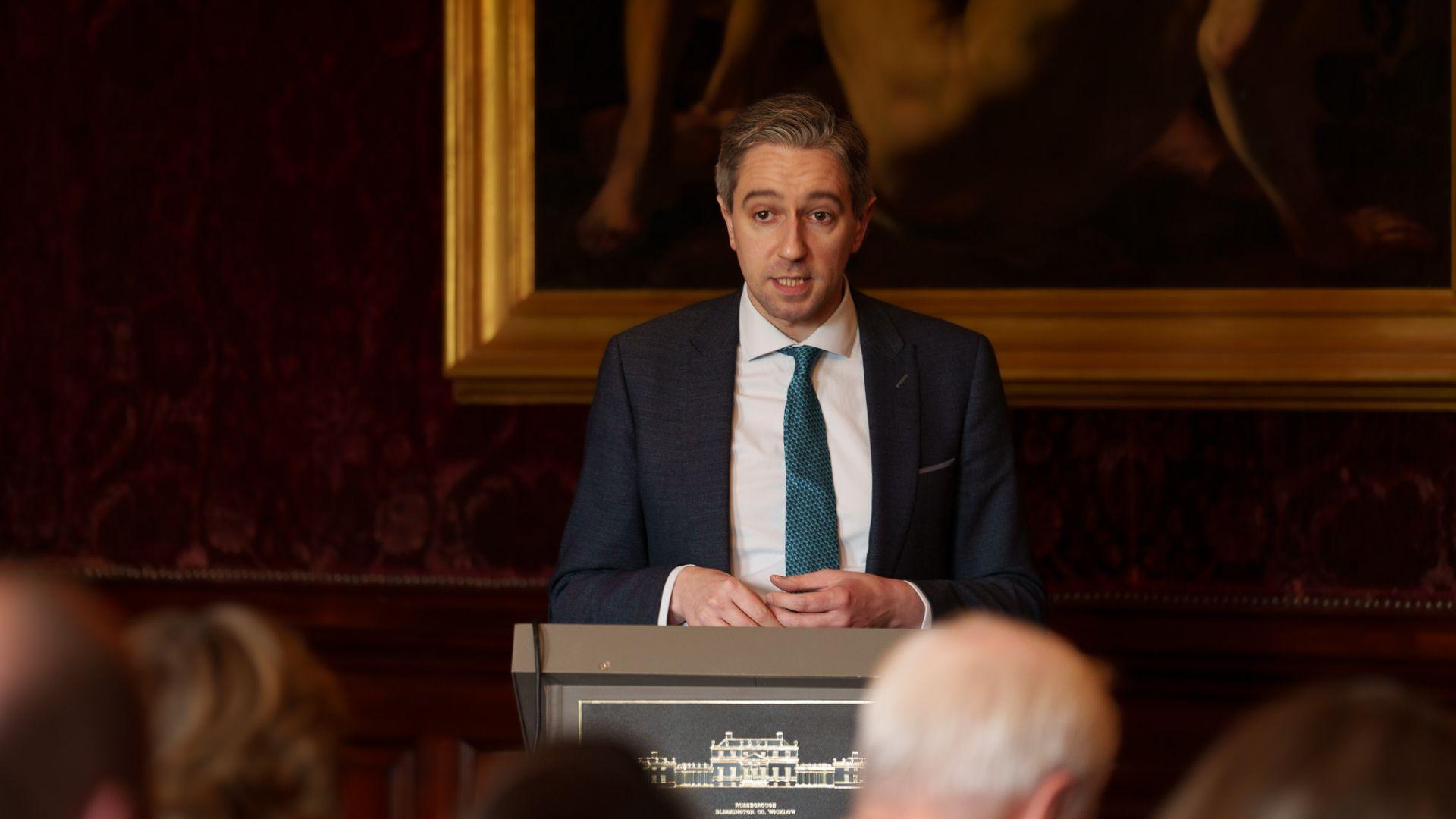“To be crowned a cultural destination of international significance is wonderful recognition of Ireland’s foremost Palladian architect and engineer, Richard Castle.”
New and exciting information on Ireland’s foremost Palladian architect, Richard Castle (c.1690-1751) was revealed in a comprehensive report launched recently at Russborough by Minster Simon Harris. Our Conservation and Management plan for Russborough’s Estate and Parklands began officially on February 10th. But the road to it has been years in the making, almost three centuries, starting with the estate's original architect, the aptly named Richard Castle. We spoke with Christopher Gallagher, the conservation plan’s lead author, who brought us through the process of assembling the report that will influence our current redevelopment plans, as well as Damien Blackweir, our resident plantsman and Head Gardener; the person tasked with seeing the plan is carried out.
The extensive report, undertaken by experts Christopher Gallagher and Dr. Sarah Rutherford, involved extensive analysis of the extant features at Russborough, and includes comparisons with equivalent sites in England and Wales. It has concluded that Castle laid out the landscape design of formal terraces and canals informed by the writing of Stephen Switzer (1682–1745) – an English garden designer and author specialising in water gardens and who described himself as a ‘hydrostatician’.
Commissioned by the Alfred Beit Foundation with support from LEADER via the Co Wicklow Partnership, this new finding has research implications for a number of other Irish sites, and propels the significance of the Russborough landscape into that of international importance.
Head Gardener, Damien Blackweir explained, 'the project came from a desire to restore aspects of Russborough to their approximate appearance when the grounds were first built. This is guided by plans discovered from records the 1st Earl of Milltown. Aside from the pleasing aesthetics, Castle’s design has become a part of the natural environs of Russborough.’ The gardens and landscape are now, according to Christopher Gallagher, 'a part of the life cycle of countless insects, as well as mammals. Here, historical preservation and ecological needs have become a married consideration, and to preserve the history of Russborough is to act towards benefitting the surrounding biodiversity.'
When asked if it was difficult to maintain the grounds with the goals intended for it, Damien said, ‘it’s a balancing act’, explaining the issue is the lengthy history of Russborough itself. When it comes to presenting the house, there has been some debate about the visual choices and features, he posed the question ‘do we make it like the 1700s when it was built, or when the Beits bought it in the 1950s?’
This involves deliberating every detail of the lengthy correspondence concerning the demesne between the Beits and their illustrious gardener James Russell. Christopher Gallagher cited that ‘Russell was focused on beatifying specific areas rather than changing them outright, but he was an extremely good plantsman, bringing plants over to Ireland, sometimes for the first time, and doing very interesting things with them. He was also a very good designer,' he said, referencing the rose garden layout, now in the process of being restored, as designed by Russell, not Castle.
Russbourough's wooded areas require careful management too. Recent visitors, and the environmentally conscious, might be worried the trees here are being deforested, but this is an effort at preservation. ‘Some of the trees are at the end of their lives’, Damien explained, ‘and some just don’t belong there’.
‘The beeches were in decline’, Gallagher concurred, mentioning this was a result of not only improper placement of other trees in the same area but poor handling during their initial planting. ‘Raising trees is an art largely lost. If a tree has become sick with disease and then planted, it runs the risk of spreading to other trees in the surrounding area, a problem that has plagued the trees of Russborough for some years.' When asked about the level of care that goes into efforts like these, Damien replied, ‘you don’t barrel into a job. gardening takes years.’
This has resonance when considering the Russborough landscape, largely unchanged since the 1740s. ‘Things have come and gone’ Christopher Gallagher tells us, ‘planted and taken out, but the spine of Castle’s original design remains.’ When asked how important Russborough was as a sight of historical significance: ‘It’s one of the great houses of Europe’, Gallagher responded, ‘the most beautiful in Ireland, some people say that it’s English, but it isn’t an English design, it’s Italian. It is an Irish demesne, it was made with Irish materials, by Irish labourers, on Irish land, in the Irish landscape.’
Finally, when asked what he found most interesting about Russborough’s landscape, Christopher Gallagher’s answer concerned the surviving legacy of its overall design, a rare thing, ‘[Castle] showed extraordinary vision to see the sublime potential in the landscape. He was anticipating later developments in landscape design by about a hundred years.’
These sentiments were echoed at Russborough’s recent launch of the Parklands Conservation and Management Plan. Simon Harris said 'Russborough is indeed dripping with significance; to be crowned a cultural destination of international significance is a wonderful recognition of Ireland’s foremost Palladian architect and engineer, Richard Castle.’ Harris went on to say 'It's so important that this house, the Alfred Beit Foundation, through the Conservation Plan, is asking what do we need to do to make sure we can continue to develop in a sustainable way, while staying true to our history, and Castle's vision?'
Indeed, Castle seems to have the honour of being the first of many artists who would grace Russborough with their creativity, his legacy being one of the best preserved 18th century landscapes in Ireland.
